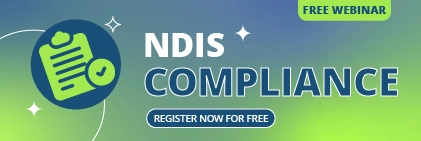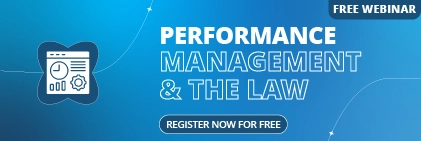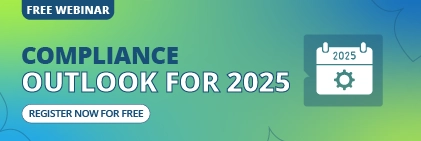Ensuring compliance and security within your organisation is more important than ever in the current business climate. For business owners and HR managers, a strong risk management system can be revolutionary. This article examines the ways in which a risk management system can improve security and compliance, giving you the knowledge you need to make wise choices. We’ll go over the main advantages and recommended procedures for implementing and utilising a risk management system successfully.
What is a Risk Management System?
Risk management framework is a way of identifying, assessing, and prioritising risks, and coordinating and economical application of resources to minimise, monitor, and control the probability and/or impact of unfortunate events or to maximise the realisation of opportunities. A collection of tools and methodologies to analyse and control the exposure to and the consequences of the threats to an organisation. These tools also offer processes to control and manage actions to reduce the risk in both a proactive and reactive way. A risk management system organises the management of risks from identification to continuous monitoring and risk mitigation.
With proactive risk management, organisations can avoid the expensive costs of business disruption and ensure they are compliant with regulations. Risk management systems help organisations to assess risks, prepare a risk management cycle and a mechanism to supply risk assessment data to those making decisions, including criteria for risk indicators, risk characteristics and relevant risk trends. Risk management guards organisations and fosters an enterprise-wide risk-aware culture.
Features of a Risk Management System
-
Risk Identification and Assessment
Risks are identified and their likelihood and severity are evaluated using risk management systems. This entails obtaining data, looking at patterns, and ranking these risks according to how they will impact the operations of the company. In order to effectively use a risk management system, owners need to be aware of the organisation’s activities in the industry and the external environment.
-
Real Time Monitoring and Reporting
Live tracking allows companies to follow dangers as they occur and react promptly. Automated reporting provides data about trends and helps decision makers remain up to date. Through constant tracking, organisations are able to spot new dangers and act in advance to mitigate them. Live tracking lets companies judge how well their action plans work and adjust them on the spot when necessary. This adaptable method keeps risk management systems working well, even in fluctuating situations.
-
Data Analytics and Insights
Data analysis tools inside a risk management system provide helpful information about risk trends. This data helps companies make informed choices, and further develop their risk management systems for the future. With past data, businesses can find dangers that happen frequently and create specific plans to lower their impact and frequency. A data driven approach such as this will allow the company to manage risks both reactively and proactively.
Enhancing Compliance with a Risk Management System
1. Understanding Compliance Requirements
Compliance requirements can vary by industry and region. A risk management system allows for businesses to stay up to date with all regulations that are relevant for them. It also ensures they meet all necessary GRC (Governance, Risk and Compliance) standards. Understanding compliance requirements entails staying informed about regulatory changes and best practices within the industry. A risk management system provides the tools and resources needed to stay on top of compliance requirements.
2. How Risk Management Systems Ensure Compliance
Risk management systems streamline compliance processes by automating labour intensive tasks such as documentation, reporting, and audits. This will reduce the risk of human error and ensure that pertinent laws are always followed. Incorporating compliance management into your risk management system will ensure compliance activities work cohesively with the overarching strategies of risk management. Automated compliance features will benefit regulatory audits and inspections, assisting in record-keeping and timely reporting within the business. This approach significantly increases the organisation’s capacity to manage compliance risks.
3. Improving Security with a Risk Management System
-
Identifying Security Threats
A risk management system can identify potential security threats such as cyber threats, data breaches, and physical security risks. Through the assessment of these threats, businesses are able to implement relevant precautionary measures. This can include threat identification, such as analysing internal and external factors that would compromise the organisation’s security. This approach ensures that potential threats are considered and addressed in an appropriate manner. By identifying security threats in advance, businesses are able to create targeted strategies to prevent threats and ultimately protect the company.
-
Implementing Security Controls
Security controls are important for safeguarding your data. Risk management systems streamline the deployment and usage of important security measures like firewalls, encryption, and access controls. Centralising these means organisations can ensure a consistent and safe management of this data. A risk management system equips businesses with the tools needed to strengthen data protection effectively.
-
Real Time Threat Monitoring
Real time threat monitoring greatly helps businesses detect and counter security incidents, minimising their impact and protecting assets. It seeks to identify and resolve vulnerabilities before any exploitation can occur. Technologies like intrusion detection systems and solutions play a vital role in not only tracking, but responding to potential threats promptly.
4. Integration with Other Business Systems
-
Integrating with HR Systems
Integrating a risk management system with HR systems streamlines several processes such as hiring, training, and performance management. This integration ensures that risk management practices are embedded in HR activities, meaning that risk management alongside HR systems are able to help identify and mitigate risks related to both employee conduct and employee and business compliance. By centralising risk management and HR data, organisations can gain an overview of potential risks and develop mitigation strategies.
-
Advantages of Seamless Integration
A seamless approach to risk management is achieved and efficiency is increased when risk management systems are integrated with other business operations. This technique enables the company to cover all the risks in all the operations and divisions of the company. This diffuses the risk management philosophy in all the operations of the company with a very smooth integration, improving the inter-department communication and coordination. This ensures all risk management activities are in line with the business motive.
5. Cost-Benefit Analysis of Implementing a Risk Management System
-
Initial Costs vs. Long-Term Savings
The long-term benefits are significantly more than the initial cost and energy spent on implementation and training. Organisations see a rapid return on investment, with the spend on preventing expensive incidents and meeting regulatory requirements being earned back very quickly. By adopting a risk management system, the business will be able to decrease the severity of risks facing the business and enhance operational efficiency and hence improve business performance. There will be a quantifiable return on investment for a risk management system by way of reduced risk exposure, enhanced regulatory compliance and more cost-efficient operation of the business.
-
ROI of Risk Management Systems
A business case for the investment is that it can save the organisation the high costs of incidents, such as security breaches or regulatory fines, and improve the overall performance. Calculating the ROI and financial benefits of business advantages enables organisations to make fact-based investment decisions.
-
Hidden Costs to Consider
Oftentimes, hidden costs will pop up and surprise the business. These costs include training and maintenance. While maintenance costs cover updates and technical support, training costs include educating staff members and offering continual assistance. Each of these hidden costs is essential to the implementation of a risk management system. Businesses can develop a comprehensive and practical budget by accounting for these costs.
6. Choosing the Right Risk Management System
Key Factors to Consider When choosing the best risk management system for your business, prioritising ease of use, scalability, and seamless integration capabilities are all vital decisions to make. These key factors ensure the system is compatible with existing software solutions like governance and risk compliance (GRC) tools and is able to be integrated within your existing infrastructure.
-
Vendor Evaluation and Selection
Businesses should select a vendor with demonstrated success in deploying scalable and customisable risk management software by evaluating risk management system providers. These software offerings should be judged based on industry knowledge, customer reviews, and the range of features offered. You will need a dependable source of support for your company throughout the implementation process, and as such, the vendor’s customer service can help maintain system effectiveness for long-term risk monitoring and mitigation.
-
Customisation and Scalability
Select risk management software that can be customised to meet your specific needs. Whether you’re operating in finance, healthcare, or construction, scalability is crucial for growing businesses. This ensures the system can handle increasing data volumes and adapt to more complex risks as your organisation grows.
Best Practices for Implementing a Risk Management System
-
Planning and Preparation
Implementation success begins with planning and preparation. Establish objectives, assign resources, and create a thorough execution program. A well-structured implementation plan guarantees that your risk management system is successfully and smoothly implemented within the organisation.
-
Continuous Improvement and Updates
Review and update the risk management system regularly. Routine reviews also involve ensuring that the system functions as expected, identifying opportunities for improvement, and making required updates. Continual improvement involves staying abreast of more general industry choices and practices, and organisations can maintain an up-to-date and adequate risk management system through managing risk in a proactive manner. Pre-empting problems to stop them affecting the business is a core tenet of this model.
Conclusion
Implementing a risk management system can significantly improve compliance and security for your business. By identifying and mitigating risks, ensuring regulatory compliance, and enhancing security measures, a risk management system provides valuable protection for your organisation. Invest in a robust system, follow best practices for implementation, and continuously improve your risk management strategies to stay ahead of potential threats.
FAQ’s
1. What is the most important feature to look for?
Your company’s needs will determine the essential features, but common priorities include robust security, integration, and ease of use. Make sure the system allows for customisation and scalability to meet the unique requirements of your company, while simultaneously supporting essential features like risk identification, assessment, and real-time monitoring.
2. How can I ensure the risk management system is secure?
Choose a system with robust security measures like encryption and multi-factor authentication. Pick a vendor offering ongoing support and updates to tackle new threats. Picking modern vendors will ensure that your risk management solution is up to date with current trends, and that it is compliant with all GRC regulations.
3. How do I involve employees in the selection process?
Gather feedback via surveys or focus groups and involve key employees in trials. This ensures the system fits their needs and promotes adoption. Specifically, making sure that your risk managers are familiar with the system and its features is essential in order to make the most of your investment.
4. What if my system isn’t meeting my needs?
Evaluate your needs again and find any discrepancies between them and the features of your risk management system. If necessary, speak with your vendor about upgrades or modifications. It might simply be time to move to a system that is more appropriate. Employee input guarantee that the system adapts to your company’s needs and is the ideal option for your size and sector. Your risk management system should fit your business, otherwise you may be left undefended to risks.
Read More About Risk Management System:
- 9 Steps to Develop an Effective Risk Management Strategy: Key Steps and Best Practices
- 9 Key Components of an Effective Enterprise Risk Management Framework
- Implementing Risk Management Software: 5 Essential Steps in a Step-by-Step Guide
- Top 10 Questions to Ask Before Choosing Risk Management Software
- How Can a Risk Management System Improve Compliance and Security





